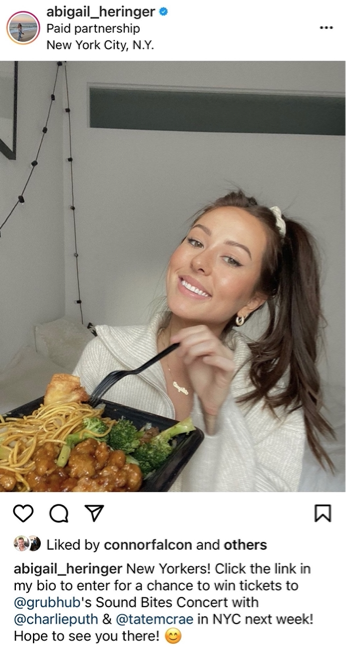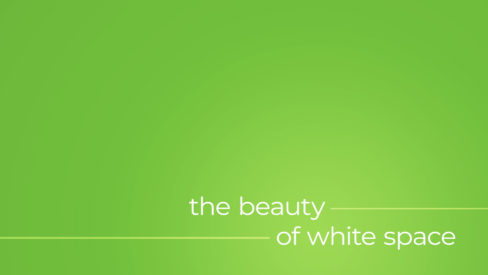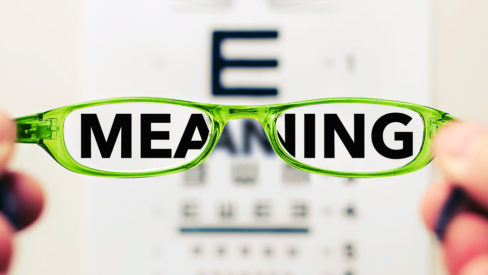If you are a fan of any of the Bachelor franchises, whether it be Bachelor/ Bachelorette or Bachelor in Paradise, etc. you have no doubt heard the phrase “Here for the wrong reasons.” To the non-Bachelor Nation members, the person being referred to in these cases is perceived to have joined the reality competition NOT in search of love, but for fame and social Media followers – basically, they are being called inauthentic. While this is a negative in terms of the purpose of these shows, being chosen as a contestant is a proven method of gaining followers and opening the door to influencer opportunities. In fact, in the 12 hours following the premiere of a new episode, a competitor with enough screen time can see an increase in followers by the hundreds or thousands. For example, Abigail Heringer, a contestant on season 25 of The Bachelor, gained over 142k new Instagram followers within the first two episodes of the season (1660% growth). Ten months and one stint on Bachelor in Paradise later, she surpassed 806k followers, became verified as a public figure on the platform, and received paid partnerships with Amazon Explore, Grub Hub, Portland Trail Blazers, Nutrafol supplements, and Venmo/CVS. Without winning either of the competition series she participated in, this Client Financial Analyst has established herself as an influencer simply for being likable while looking for love.
Now I’m sure you’re asking yourself, how this is relevant to Media Planning and buying? Celebrity endorsements have been prevalent in media campaigns for decades, from Brooke Shields and her Calvins, Alex Trebek and Colonial Penn Life insurance, all the way to Shaq shimmying for his Icy Hot. However, the Influencer’s level of fame has come to matter far less in the rise of the nano/micro-influencer. A nano/micro-influencer can be ANY person with a social media following between 1k and up to 100k who can incite a behavior from their followers. This individual does not need to be a trained actor or have any qualifiable expertise within a specific vertical, and yet they are perceived as more authentic and trustworthy when it comes to product/service recommendations. The perceived realness of these non-traditional stars often results in higher purchase intention of the products they endorse, because consumers personally identify with them and try to imitate them (Tran and Strutton, 2014). As a result, the use of micro-influencers as a vehicle for reach has become a staple in Media plans as opposed to a novelty. And yet, as so many brands dive into the pool headfirst, there are two important questions to ask before a brand takes the plunge: Does influencer marketing make sense in our category? And are the selected influencers right for our brand?
According to a recent GWI Social report, Influencer followers have a varied list of passions. They over-index for being interested in Travel, Personal Healthcare, Fitness & Exercise, Wildlife/Nature, DIY/Home Improvement, Fashion, Beauty/Cosmetics, and Charities/Volunteering.
If your brand falls into one of these interest categories, then it’s time to start looking at which influencer(s) are best to partner with. Sure, you could choose based on follower count and operate your influencer campaign as a pseudo-social-programmatic experiment. But! As mentioned, the real benefit of micro-influencer campaigns is the authenticity and seamless nature of this product placement within that influencer’s feed. Though not an exact science, 2 of the most important questions to ask are 1. Does the influencer embody the aspirational lifestyle of your brand? And 2. Is the use of your product, service, or experience relevant for the influencer? Let’s take a look at the bachelor contestant mentioned earlier, Abigail Heringer, and her partnerships to see what made the most sense.
Amazon Explore and GrubHub are clearly Reach campaigns that have everything to do with the number of followers and driving awareness. Aside from the fact that Abigail lives in New York (Grub Hub), neither of these campaigns/products relate to her or her experience specifically. They are unpersonalized copy and paste captions alongside a selfie, with very little brand presence, being broadcasted out to her followers.
On the other hand, the Portland Trail Blazers and Nutrafol feel much more natural and authentic. The Nutrafol copy calls out a few personal notes and how the product solved a problem she was personally experiencing – all while showing off her shiny hair as its own testimonial. For my non-bachelor nation folks, just know that “hometowns” is a series staple and, as Abigail is from Oregon and met her current partner on Bachelor in Paradise, the Trailblazers partnership makes perfect sense for Abigail’s background while the copy is a clever nod to her claim to fame.
And finally, we come to Venmo. This partnership is the one that makes the least sense. Not only are there zero personal connections to the influencer, but payment methods at retailers does not fall within the GWI top passions and overall does not make sense for an influencer campaign. While it does achieve reaching an audience and bringing awareness, the content of the ad is not enhanced by the influencer. In fact, the engagement on the posts didn’t center around the topic of the post at all. Instead, there were comments referring to environmental sustainability, where Abigail got her pants, personal information privacy, and even a comment so pertinent to this blog it’s almost unbelievable “Haha, just raking in the dough from reality tv stardom.”
So cutting the stems and getting to the point (see what I did there?), micro-influencer campaigns can be incredibly effective in terms of reaching an engaged audience through an authentic channel. However, it is important not only to find the right influencer to connect to your brand, but brands also need to be honest as to whether or not a micro-influencer campaign is right for their product/service or if they’re just trying to hop in on a new media vehicle because of it’s popularity. Just as they say in Bachelor Nation, are they here for the wrong reasons?










